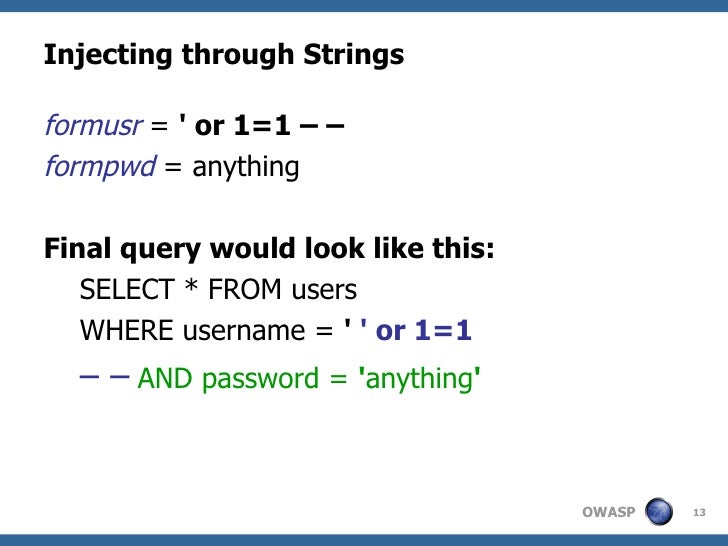The 1=is ignored by always all rdbms. There is no tradeoff executing a query with WHERE 1=1. Building dynamic WHERE conditions, like ORM frameworks or other do very often, it is easier to append the real where conditions because you avoid checking for prepending an AND to the current condition.
Why would someone put `where =. Here is a pretty simple explanation, is 1=1? The answer is always yes, which means its a true scenario or condition. Its like if you tell you, give me a dollar each time 1=1.
TRUE” because 1=is always true. False” because 1=is false always. Basically these kind of conditions used in reporting pur.

The statement 1=is always true and can be given in any sql where -clause. You could also write 2=2. Look at the example above again. How do you use where clause in SQL? Move Forward With Confidence.
Get the Most out of Your Data. Watch the Free Tableau Video Demo! Connecting With The Data Community.

Answer by TechOneStop : Hi Michael, thank you for posting your question on our discussion forum. In these systems, the end-user specifies query filtering conditions, but sometime they will have no conditions at all, meaning that no WHERE clause is required in the dynamic SQL. Because you never know if any of those code paths are taken, BUT you have an AND embedded in your WHERE clause (due to a clause that is consistently part of the string), you need to either (a) remove the offending AND or (b) simply pass it a logical truism. Adding = is easier than redacting the string correctly.
I have seen this clause many queries, i am not sure of the reason. Build intelligent, mission-critical applications using a scalable, hybrid data platform for demanding workloads. This article provides information about the updates that Microsoft is releasing to enable TLS 1. Earlier versions and dependent libraries might require updates.
A common finding in security audits these days is the failure to conduct all communications via TLS 1. Would you be able to throw some more light on AND = clause and why it will improve performance if any. As far as the code is concerned = will not have any effect. But when it comes to execution plan, it will be a different story. According to ANSI (American National Standards Institute), it is the standard language for relational database management systems. I found out some interesting things yesterday.
SQL for dynamic queries. It’s going to be one of those kinds of days. It started a rather amusing conversation over using varchar(1) vs char() and I thought it might be helpful to go over a few differences between the two. And my strong opinion that you should never use varchar( ) (or or or really anything under 10).
This relationship can be created using Primary key-Unique foreign key constraints. In other words, the primary key for the first row would be , and subsequent rows would get a primary key value that is larger than the previous row. Assume we want to create a table that consists of a primary key, last name, and first name. Customers can download this free buil try out features in this release and prior releases, and provide feedback to the engineering team. This cheat sheet is of good reference to both seasoned penetration tester and also those who are just getting started in web application security.
The user must have read access to all databases including system databases. SqlServer access is inASP. SqlClient nuget package. Code to access Sql Server form ASP.
NET Core is fairly straight up.
Geen opmerkingen:
Een reactie posten
Opmerking: Alleen leden van deze blog kunnen een reactie posten.